Reviews
After a $200 Million Upgrade, Glenstone May Fulfill the Fantasy of the Perfect Private Museum. It’s Also a Little Unsettling.
Glenstone is perhaps the most meticulous, detail-oriented museum you will ever visit.
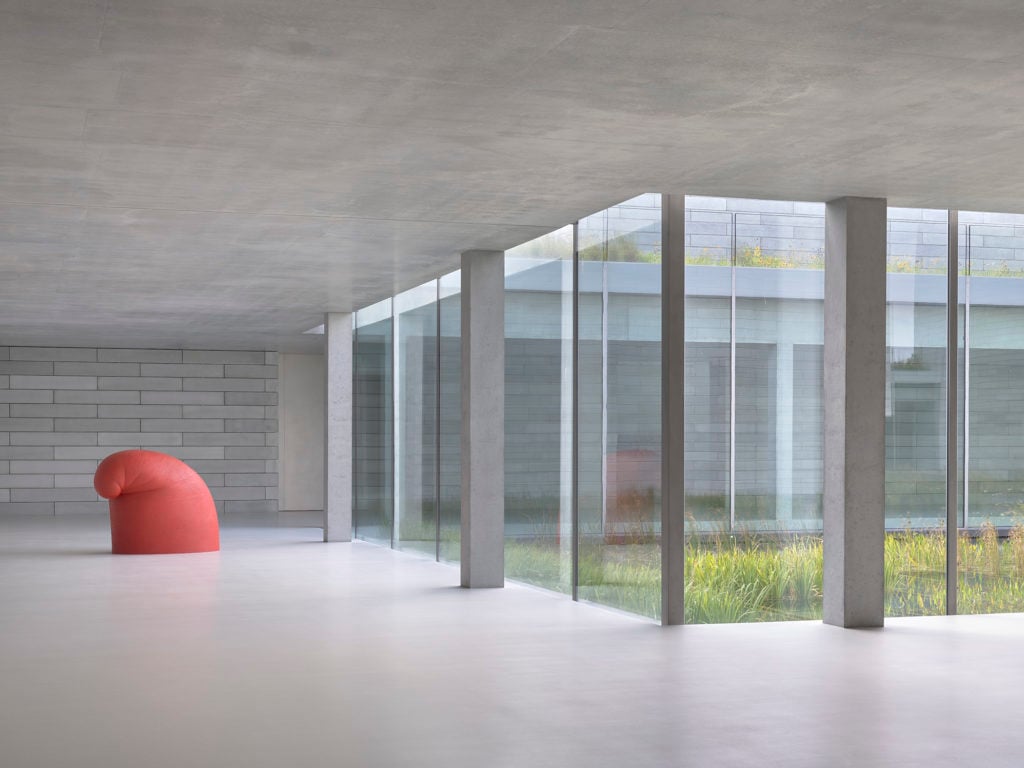
Glenstone is perhaps the most meticulous, detail-oriented museum you will ever visit.

Julia Halperin

What would a museum look like if money were no object? If there were no need to get bodies in the door to generate attendance revenue, no limit to the acquisitions budget, and no constraints placed on the artists’ or the founders’ visions?
Glenstone, the bucolic private museum nestled in a wealthy suburb of Washington, DC, is about as close to this fantasy as we are likely to get—with all the benefits and blind spots that entails. The original Charles Gwathmey-designed space opened quietly in 2006 to showcase the collection of industrialist Mitchell Rales and his wife, the curator and former gallerist Emily Rales, just a stone’s throw from their home.
Now, a five-year, $200 million expansion has just been completed, increasing the size of Glenstone by a factor of almost seven. By our calculations, the new 204,000-square-foot, Thomas Phifer-designed complex—dubbed the Pavilions—makes Glenstone the largest contemporary private museum in the country, putting it ahead of the Broad in Los Angeles and the Rubell Family Collection in Miami.
Nothing about the experience of visiting Glenstone is accidental. When the sleek new building opens to the public on October 4th, a carefully predetermined number of visitors will walk along a winding pathway that cuts through 130 acres of meticulously landscaped meadows and woodlands to reach the concrete construction.
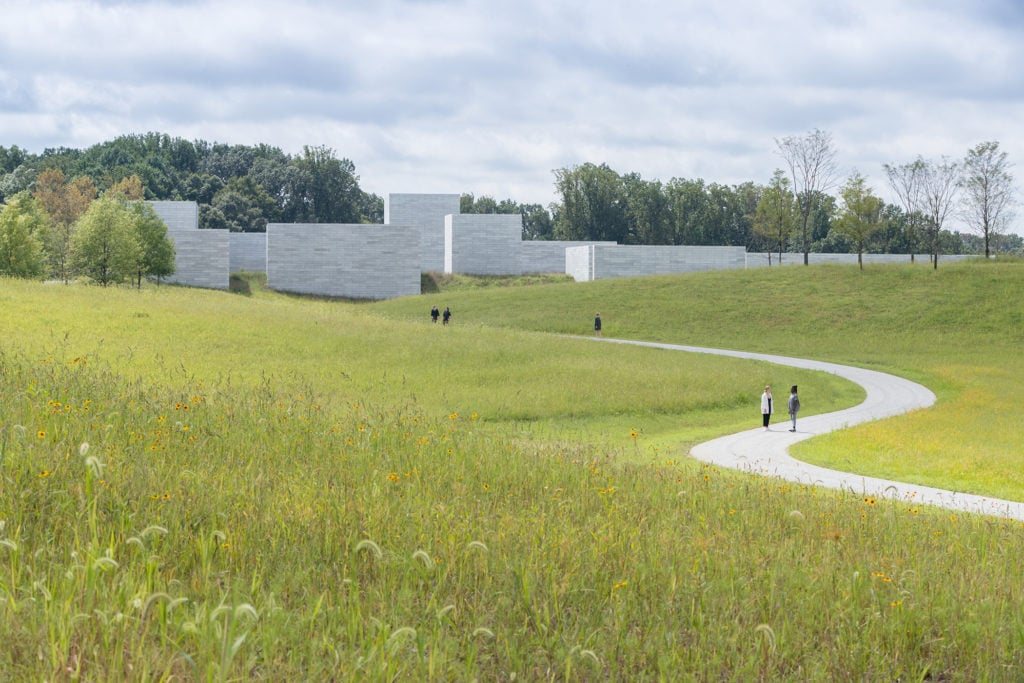
Approach to the Pavilions at Glenstone. Photo: Iwan Baan, courtesy of the Glenstone Museum.
As they approach, they will be greeted by a handful of young, enthusiastic tour-guides sporting identical gray smocks made especially for Glenstone by the designer Ai Bihr. (The guides’ shoes, black New Balance sneakers, are part of the uniform, too.) The dusky gray of their outfits almost precisely matches the custom concrete blocks that form the building’s exterior. The whole experience feels as if you’ve been given a pair of glasses that allow you to see the entire world through an Instagram filter.
Once inside, visitors will encounter the kind of blue-chip contemporary art—Basquiats, Pollocks, Twomblys—that almost no public museum could afford to purchase today. (The foundation owns around 1,300 works of art and $1.5 billion in assets, according to its most recent publicly available tax filing.)
There is no didactic wall text, or even labels next to the works; critical information is instead subtly rendered in clean black lettering in each doorway. Guides stand in each room, smiling and ready to chat.
Depending on your point of view, all this might sound heavenly or oppressively prescriptive. Mitchell and Emily Rales, the founders of Glenstone, are steadfast in their commitment to creating a very particular kind of experience for their visitors.
“We hope your pulse will slow down, that you will become aware of your breath, and the changing light levels in the galleries,” Emily Rales told press during a recent preview. “We want to encourage meaningful encounters.”
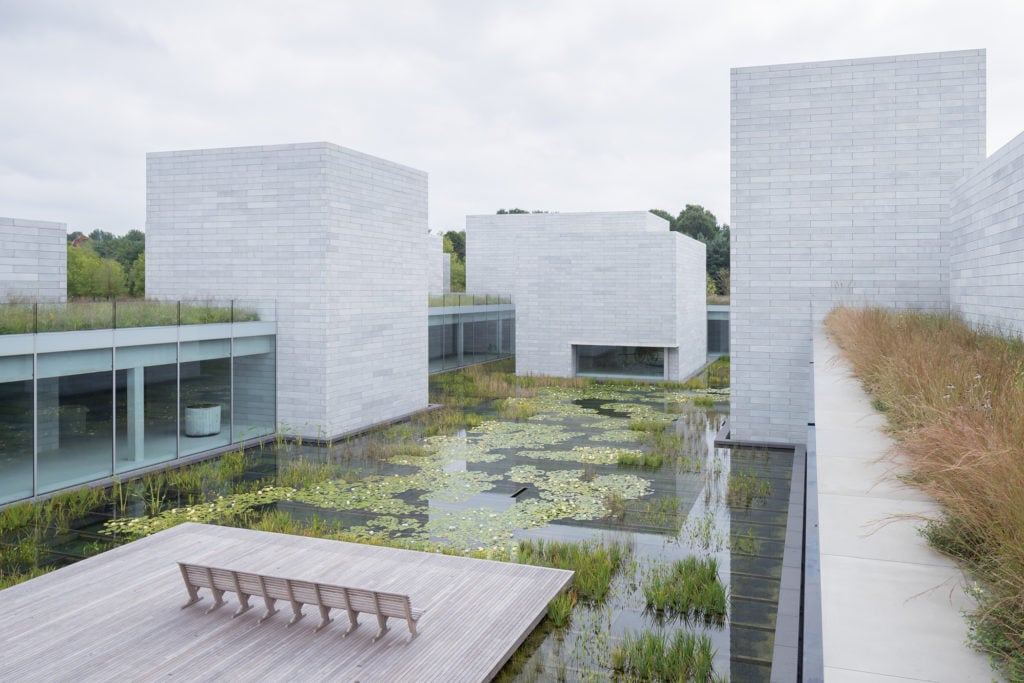
The Water Court at the Pavilions. Photo: Iwan Baan, courtesy of Glenstone Museum.
While planning the project, the couple visited more than 50 museums around the world to glean inspiration and best practices. They were particularly enamored of the Louisiana Museum of Modern Art near Copenhagen, the Menil Collection in Houston, and the Beyeler Foundation in Basel—all institutions that integrate landscape, top-notch art, and architecture.
The couple also took inspiration from professor Arden Reed’s book Slow Art: The Experience of Looking, which espouses the belief that viewers should examine art slowly, paying attention to their own shifting thoughts and how time unspools around them. (Think of it as mindfulness, but for art.)
The Slow Art philosophy, coupled with the vision of a tranquil art temple cemented during the couple’s travels, was a guiding light in the development of Glenstone, and helped determine some of its most unique (and controversial) elements.
First, the Raleses committed to limiting the number of people who could visit to preserve the contemplative experience. The museum is and will remain free, but for the moment, only 400 people will be granted tickets daily. (The number might fluctuate as time goes on.)
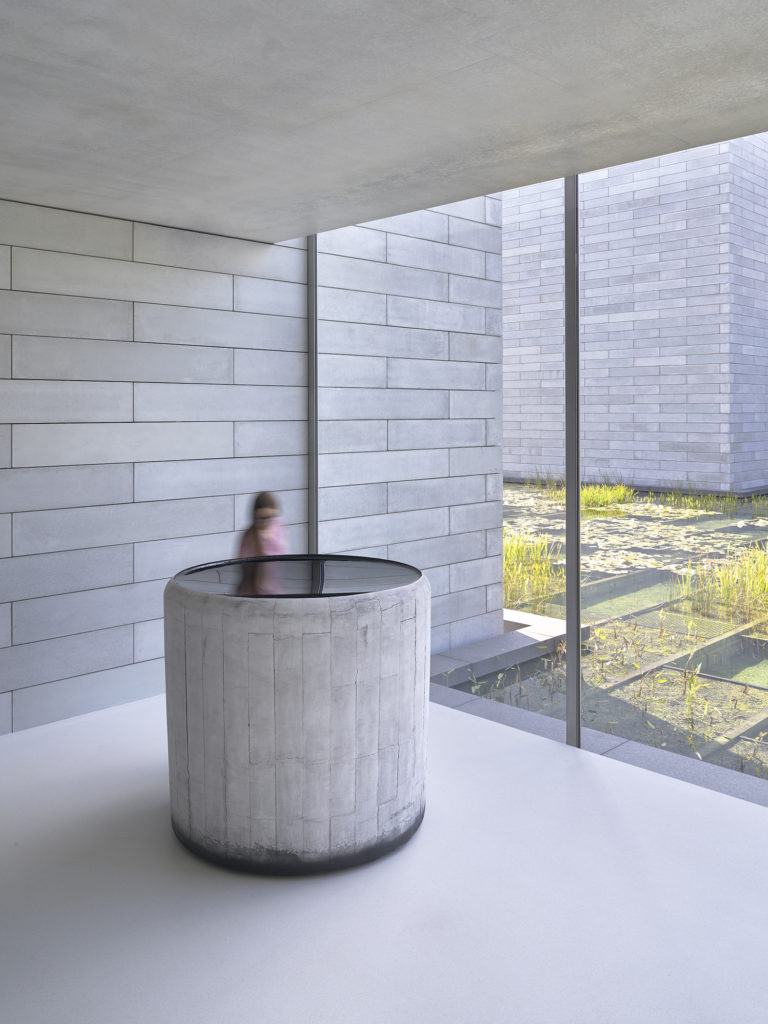
Roni Horn at Glenstone. Photo: Ron Amstutz, courtesy of Glenstone Museum.
This policy, coupled with Glenstone’s remote location (not to mention the fact that its underground spaces have—gasp!—hardly any cell service), have caused some to dismiss the institution as cloistered and elitist. The museum received fewer than 10,000 visitors in its first seven years and was one of 11 private museums subject to an inquiry from Senate Finance Committee chair Orrin Hatch in 2015. (Hatch’s letter sought to examine the tax benefits enjoyed by private museums; the IRS has not taken any subsequent action on their tax-exempt status.)
For their part, the Raleses reject charges of elitism. The expanded Glenstone will welcome as many as 100,000 people annually, according to a spokesperson. Emily likens the experience to traveling on a train’s quiet car, or visiting a library. “When you chose to go to a library, you expect people to be quiet,” she tells artnet News. “Does this mean you are oppressing people by not allowed them to speak in loud tones?”
It is not surprising that a couple as resolute, meticulous, and detail-oriented as the Raleses have a collection of almost eye-wateringly high quality. Once they set their sights on a work, they are willing to wait decades until the owner agrees to part with it. (This was the case with David Hammons’s portrait of Jesse Jackson, How Ya Like Me Now? (1988), which they acquired from the artist’s own collection.)
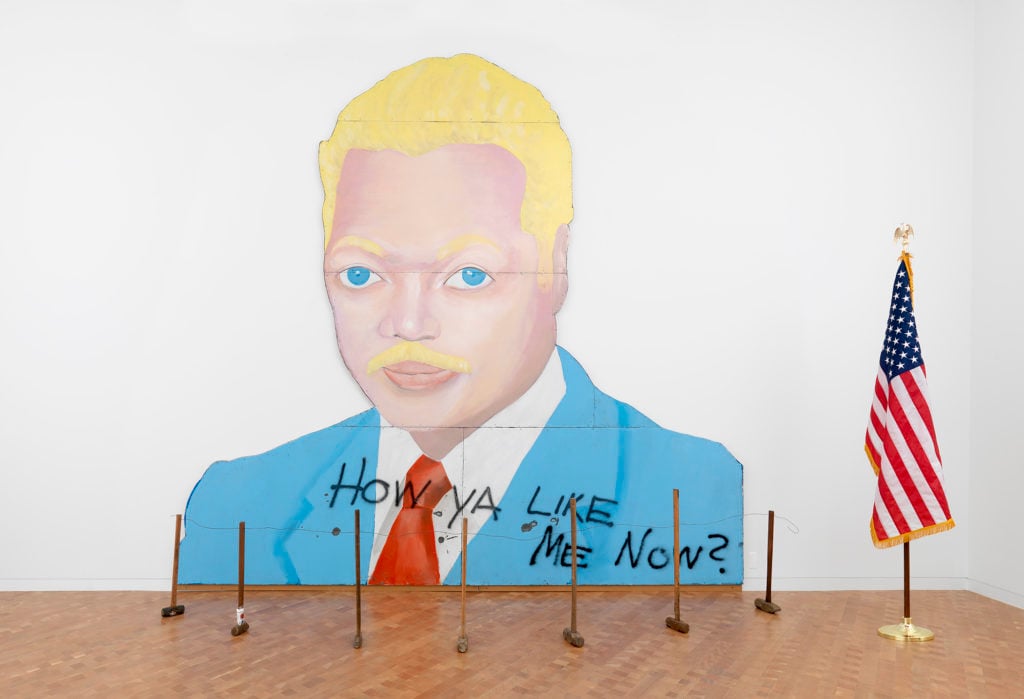
David Hammons, How Ya Like Me Now? (1988). © David Hammons. Photo: Tim Nighswander/Imaging4Art.com, courtesy of Glenstone Museum.
They also go to almost comical lengths to execute an artist’s vision faithfully. Robert Gober’s studio met with Glenstone’s architects 70 times, according to Emily Rales, to determine how to install his untitled 1992 room-size installation, which includes several operational, constantly running sinks. (Among the issues under discussion, one curator recalls: how to develop a varnish to keep the basins free of water-lines, even though they were not originally designed for long-term display.)
Meanwhile, Cy Twombly’s sculptures have never looked as sublime as they do inside the jewel-box gallery designed especially for the five works the Raleses acquired directly from the artist. Architect Thomas Phifer said he developed every element of the gallery—including the length of the hallway, the slightly inclined walkway, and the dramatic shift from dark to light upon entry—with input from Twombly before his 2011 death.
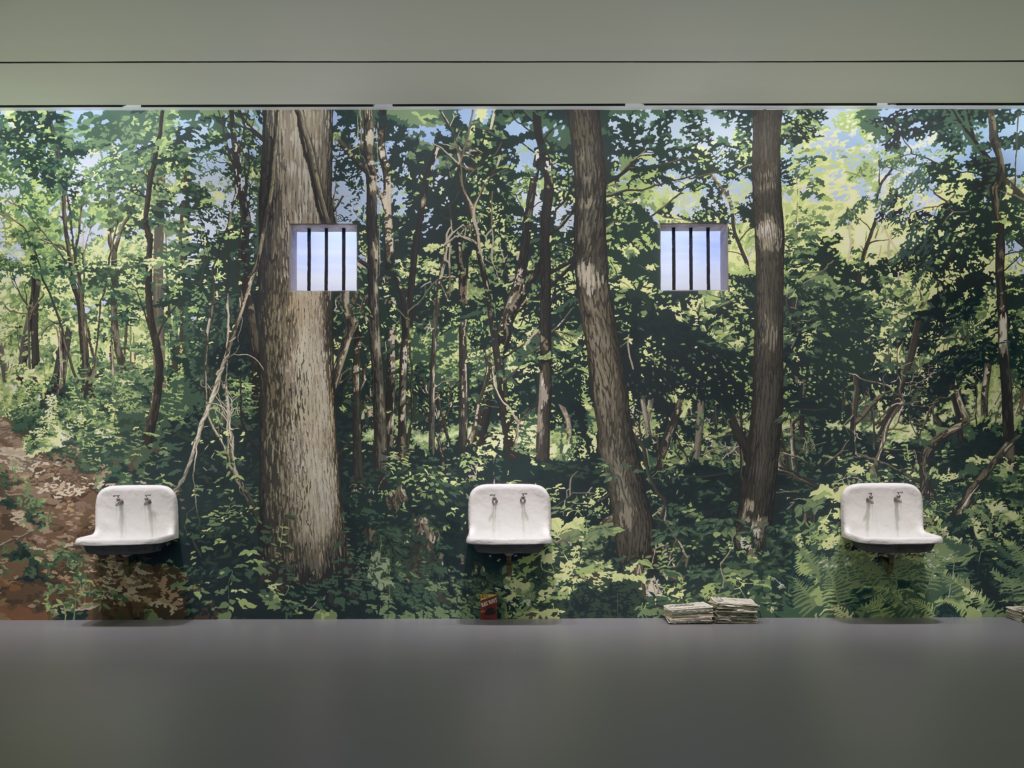
Robert Gober, Untitled (1992). © Robert Gober, courtesy of Matthew Marks Gallery. Photo: Ron Amstutz, courtesy Glenstone Museum.
Another architect on Pfeifer’s team almost broke out in a cold sweat when asked to recall the process of installing Michael Heizer’s Collapse (1967/2016), a sculpture of 15 steel beams arranged like chopsticks in a massive rectangular pit. The artist had brought the original 1967 maquette for the never-before-realized work and simply said, “make it look like the model,” curator Nora Cafritz says.
(The architect isn’t the only one with stressful associations: Just a month before the opening, the contractor hired to oversee the expansion sued Glenstone’s foundation for $24 million for alleged mismanagement and last-minute changes. Glenstone declined to comment on pending litigation but has said “we look forward to responding to these claims vigorously in court.”)
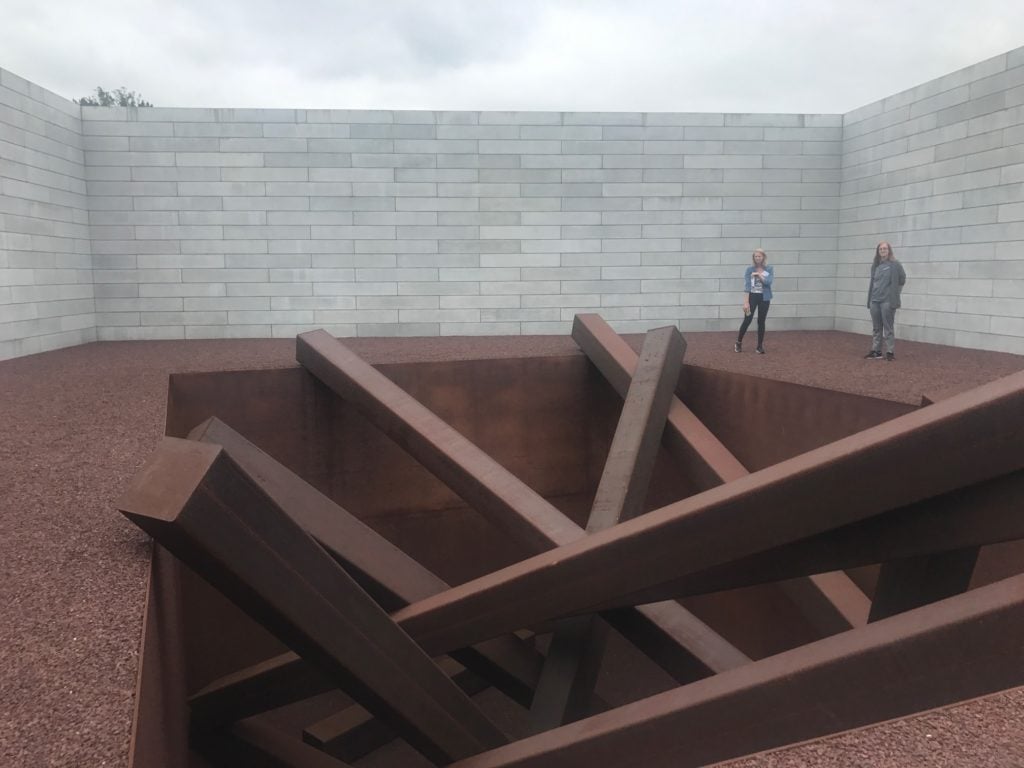
Michael Heizer’s Collapse (1967/2016) at Glenstone. Photo: Julia Halperin
Perhaps even more memorable than the carefully designed artist-specific rooms is the suite of galleries dedicated to greatest hits from the Raleses’ collection, which spans 1910 to 2018.
The space is striking for two reasons. First, the Raleses can afford to buy works that many museums are still waiting around for collectors to give them, from an extremely rare black canvas by Frank Stella to a Jackson Pollock drip painting. Second, they have seamlessly integrated into the typically male, overwhelmingly white Modern art canon superb work by women, Asian (particularly Japanese) artists, and Latin American (particularly Brazilian) artists.
The display offers proof that these artists were dealing with complimentary concerns and making equally daring breakthroughs at the same time as their white male contemporaries. Hypnotic hanging sculptures by Ruth Asawa from the mid-1950s, for example, share a gallery with paintings by Pollock, Franz Kline, and Clyfford Still from the same decade. A 1956 de Kooning is framed through a doorway by two similarly muscular abstract works from the same period by Gutai artists Akira Kanayama and Atsuko Tanaka.
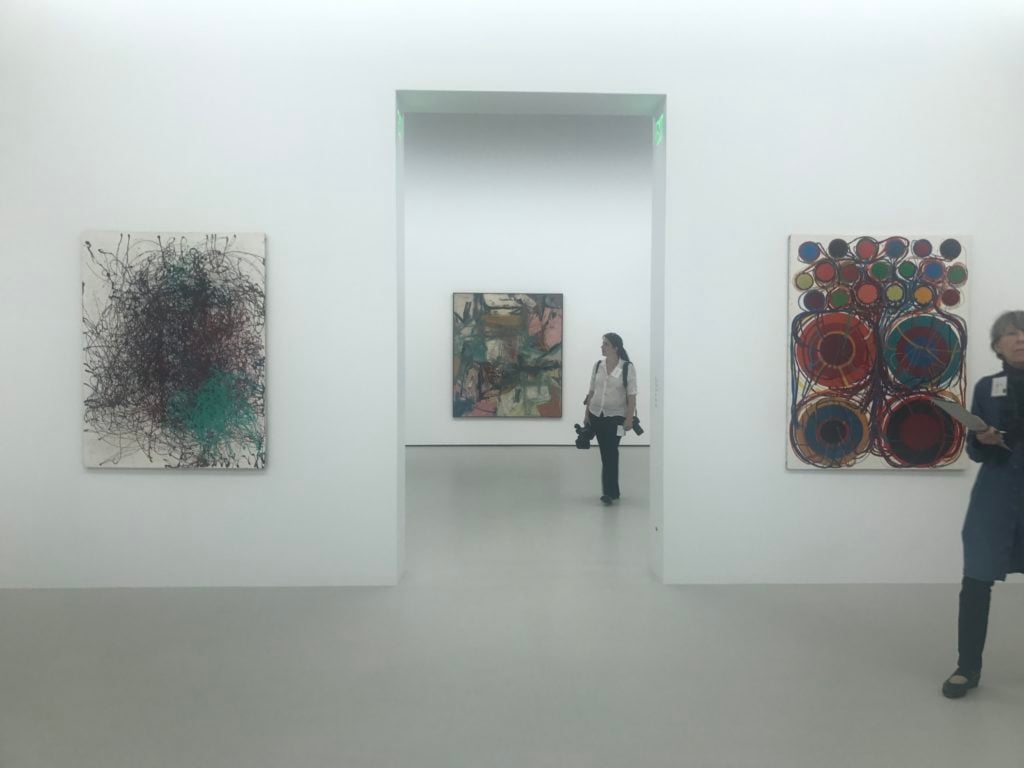
Installation of the permanent collection at Glenstone. Photo: Julia Halperin
Some curators malign the fact that their institutions woke up to the importance of certain non-white, non-male artists so belatedly that private collectors had already driven up the prices, making them too expensive for public museums to acquire. Glenstone shows what some museums might have looked like if that were not the case. (By the same token, however, one can’t help but wonder what kind of radical alchemy these treasures might have performed as gifts to public collections.)
It’s impossible not to feel greedy walking through these galleries. Once you realize how thrilling it is to see a smashing Lynda Benglis displayed in her rightful context alongside her contemporary Richard Serra, you begin to viscerally understand just how wholly satisfying it might feel to see similar historic imbalances corrected. And Glenstone offers comparatively little work by black, Latinx, and Native American artists.
Emily Rales acknowledges that the museum “has a lot of work to do” in expanding its collection, but also notes that the couple has “been at it for less time” than other institutions. In fact, a flag painting by Faith Ringgold from 1969—displayed poignantly alongside one by Jasper Johns—was such a recent addition that the museum didn’t have time to add a wall label for it.
Once the couple commits to buying work by an artist, Emily continues, they are all in—and they will continue to add new artists to the collection for the rest of their lives. But they also have a rule that they only acquire work by artists who have been producing for at least 15 years, so they can judge based on the arc of a career. It seems Emily and Mitch Rales want the public to give them the same courtesy.